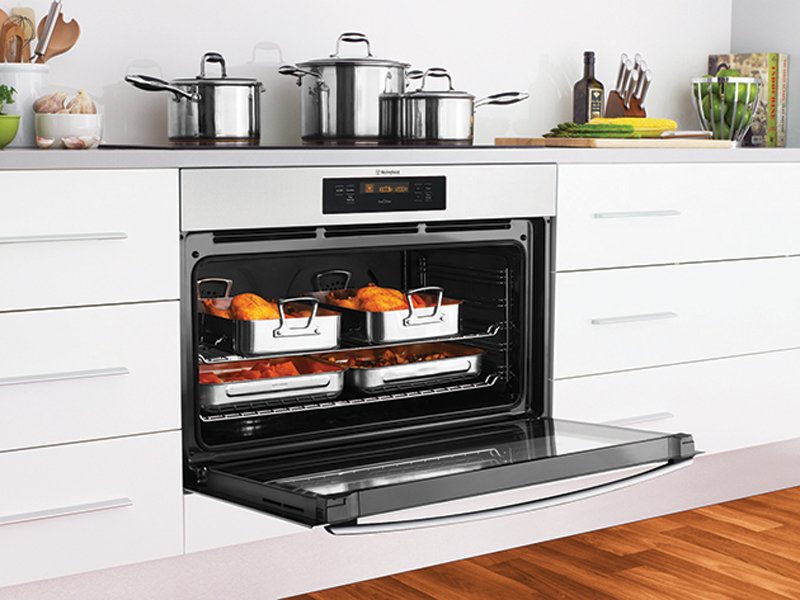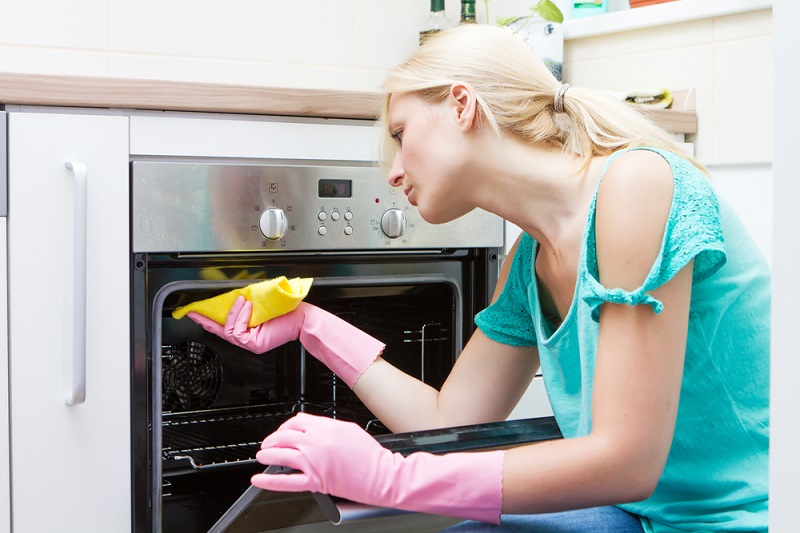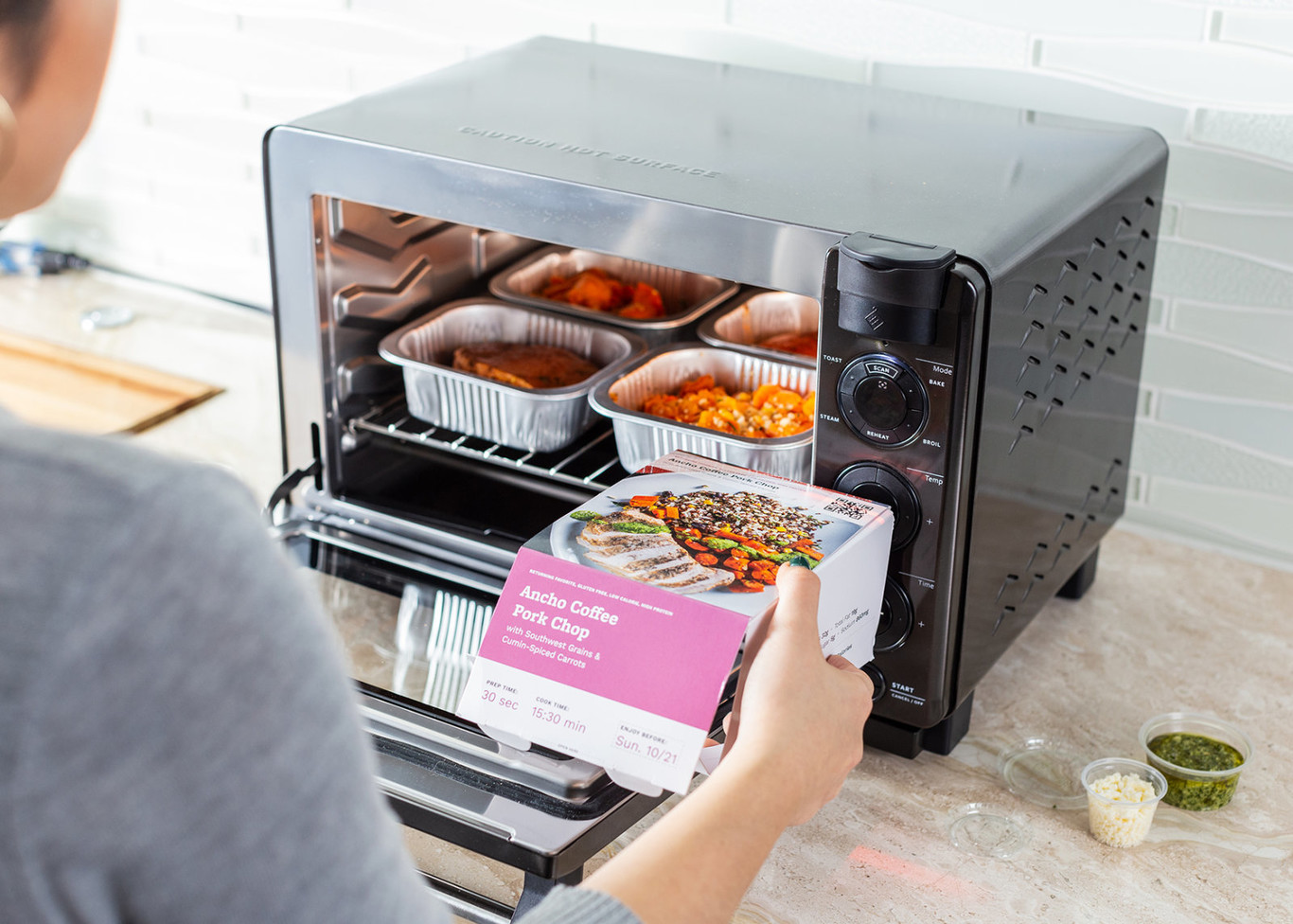What would become of a kitchen without a good built-in oven? Sink, worktop, dining table, furniture and wall units are the furnishing elements against which it is easier to indulge in style and compositional aesthetics, but it is good to remember that without a good oven even the best kitchen would lose much part of its appeal and utility. Just think of how many types of preparation you should give up if you didn’t have a similar appliance in your room. The most recent models are almost all electric and multifunction, so as to allow the best possible experience in terms of functionality and different cooking possibilities.
Usually, the latest generation multifunctional models can be used both as the usual traditional static ovens, and as ventilated ovens, often with the steam or microwave function. In general, the programs that can be selected vary between 6 and 9 (depending on the product and the price range), which can be selected based on the type of food you want to prepare and the style of cooking you want to follow.
Thanks to the introduction of digital displays in place of the most outdated and obsolete small wheels, it is also possible to set the cooking method with extreme precision, going from 30° to 350° C without any margin of error and with the awareness of having set up in a surgical way the desired temperature. It is not a bargain, especially if we consider that in this way it becomes possible to undertake even the most delicate preparations, such as the leavening of pasta or the preparation of yogurt, with greater certainty.
The multifunctional ovens allow you to cook in the simplest and most immediate way possible, thanks above all to the sensor – of which all the models of the series are equipped – which measures the degree of humidity of the baked dishes and automatically regulates the process of cooking, without having to manually set the type of heating, duration or temperature. A peculiarity that will allow you to prepare perfectly cooked dishes every time, whether you are cooking for yourself, whether you are doing it for your family or for guests (with whom it is always pleasant to make a good impression). Furthermore, the temperature probe calculates the internal temperature of the food to ensure the best cooking. To make matters worse,
Whether it is haute cuisine or home cooking, a similar oven becomes an essential tool to prepare each dish perfectly and fulfill a dream considered almost impossible: to allow the grandchildren of the new generations to cook as well as their grandmothers.
How do you choose the built-in oven for your kitchen?
The most important guidelines to follow are basically two: aesthetics and functionality. An oven must be beautiful and must work not well, but very well. On the external level, therefore, it must adapt itself to the shapes, lines and chromatic tones to the style chosen for the rest of the kitchen furniture and be coherent in the overall composition. As for the qualities inherent in its operation, there is little to say: an oven must work well.
This means that it must be efficient, consume less energy (and therefore fall into the best energy class) and have the maximum possible number of cooking functions and styles inside. As we have already said, most of the ovens are now electrically powered; in addition, some models are equipped with special insulation systems that minimize heat loss.
This means that the oven works better (because the heat is retained inside it) and consumes less (because there is no dispersion it does not need to compensate for the percentage of heat that would otherwise be lost). This last characteristic is also very important with regard to the state of conservation of the furniture within which the oven is built-in: by not losing heat to the outside, it will not spoil and overheat – with all the obvious and unpleasant consequences of the case – the other components of the kitchen furnishings.
The multifunction built-in ovens is characterized by its intuitive color touchscreen LCD interface and its WiFi technology, which even allows you to control the progress of cooking your food directly from your own device, maintaining humidity and constant temperature. The oven is also equipped with a refined innovation that allows to balance humidity and temperature: when the temperature exceeds 100°C a micro-steam is created which arrives in every corner inside the oven to keep what is constant it is assumed to be the optimal humidity level of the food and the dishes placed in the appliance.
Steam built-in oven
We have mentioned a couple of times – compared to the various functions of the latest generation ovens – the possibility of selecting the steam cooking mode. Let’s try then to understand better what it is. If you are an expert in the kitchen, or if you have been paying attention to at least one of the many TV programs that have the kitchen as their main theme in recent times, you will know very well how steam cooking has gained a strong position climbing the hierarchy of preparation methods foods both for a gourmet restaurant kitchen and for a more homely style. Steam cooking is not the exclusive prerogative of skilled chefs and star chefs;
The steam cooker is healthy and balanced, since it allows you to prepare foods while preserving most of the vitamins, proteins and mineral salts they contain, which would otherwise be dispersed during cooking. Equipping yourself with a built-in steam oven will not only make you feel more fashionable by showing off your product, but it will allow you – above all – to add to your menus a series of very simple and at the same time particularly healthy, nutritious preparations. Balanced in terms of nutritional value.
A steam oven also equipped with other very useful functions, such as the top / bottom heat (to distribute in the way you prefer the heat on your dish) and the grill. The oven is also equipped with a temperature probe, able to measure the internal temperature of the oven and inform you of the remaining cooking time. The internal volume is 48 liters and can count on the beauty of 200 automatic preset programs.
Microwave built-in oven
If until now we have concentrated on a type of cooking such as the steam type – which we could define as cooler and “fashionable” – and on a series of innovative upgrades that look to the future, now let’s take a small step back and put our attention on a cooking method that may not be the last cry, but with which each of us certainly has a great familiarity: the microwave one.
In recent decades microwave ovens have become extremely popular, becoming an essential element in the homes of many. Whether it is families, singles or children, it is difficult to do without such a device, which allows you to cook and – above all – heat pre-cooked food in a short time. It is no coincidence that the most innovative and futuristic models of built-in ovens have decided to add to their various functions also the microwave one, in order to be characterized as even more complete products and to avoid the customer an additional expense for a small appliance to be placed side by side with the own main oven. Better to have all the functions enclosed in a single product.
Self-cleaning built-in oven
They boast a series of pre-set automatic cooking programs, customizable recipes, display to adjust the temperature and technologies that guide you in the preparation with Swiss precision, balancing the humidity of the oven and the scrolling of the timers. All we need is the built-in ovens to clean themselves to make the dream of chefs and cooks throughout Italy come true! Well, this seemingly impossible dream can be said to be achieved thanks to the new self-cleaning pyrolytic technologies. It is not a joke and – counting that cleaning the oven is one of the most strenuous, tedious and demanding operations in the maintenance of your kitchen – it is worthwhile to update immediately on the advantages of a device capable of managing its own maintenance.
How does the pyrolytic technology of an oven work? This innovation, which is already widespread and promises to expand even soon in our country, consists of a particular chemical process (called pyrolysis) through which any residue is reduced to dust in the presence of a significant increase in internal temperature of the oven, capable of reaching over 500°C without exceeding 55°C outside. To start this mechanism it is necessary to select the appropriate option on the oven, which will then be managed completely independently from the appliance.
To ensure that the pyrolysis can take place in the most correct manner, the oven walls are glazed with a substance which, with the rise in temperature, reduces all the dirt inside the oven to the gaseous state. Not only the one on the walls but also the one on the grids and on the trays. Obviously, during this process the oven door is hermetically closed for safety reasons; once the self-cleaning process is finished, the gases are eliminated through a catalyst filter.
When the oven can be opened again, a special acoustic signal will alert you to the user; this also removes all the ash resulting from the carbonization. There are basically three different types of cleaning: the first one lasts about an hour and serves more than anything else to eliminate the smells of the oven, allowing you to proceed to a subsequent cooking in a short time; the second lasts about an hour and a half and eliminates odors and dirt of medium size; the third level of cleaning is the most incisive and intervenes on the most stubborn dirt,
The advantages of pyrolysis are soon known: you gain in cleaning efficiency – performed effortlessly – and in the possibility of enjoying a totally ecological process, without the use of chemical products; energy consumption, however, is minimal. Among the disadvantages, the long duration of the process must surely be counted, which inevitably prevents the use of the oven for more successive firings; moreover, a pyrolytic oven, given the additional option offered, will have a higher price than a traditional oven. Given the delicacy of the cleaning operation, it is also advisable to ascertain from time to time a series of precautions: for example, before activating the automatic cleaning cycle it is necessary to carefully remove all the crumbs that may be present in the oven, to avoid the production of excessive smoke;
Ventilated built-in oven
What is the difference between a static and a ventilated oven? The difference lies in the cooking mode. The static oven in fact heats the oven from below, from above or from the sides according to the resistances, while the ventilated oven activates an additional fan that allows the heat to circulate uniformly in the oven reaching every corner. The final result is that of two different types of cooking that adapt, as one might expect, to different dishes. The radiant cooking of the static oven is slower and allows the cooking of only one dish at a time (all gas ovens are part of this category, in which the heat radiates moreover only from the lower part of the oven, where there is the flame).
Cooking with the ventilated oven is much faster, with the air flow produced by the fan that dehydrates the surface of the food, providing it with a crispy crust on the outside, but leaving the inside more humid and softer at the same time. Because of this peculiarity, this type of cooking goes very well with baked pasta, lasagne, roasts, chicken, baked fish or pan, stuffed or gratin vegetables, but also biscuits, pies and desserts with a soft heart. On the contrary, static cooking is mandatory for all preparations containing yeast, which require a slower and more delicate cooking, as in the cases of bread, pizza and focaccia. baked or baked fish, stuffed or gratinated vegetables, but also biscuits, pies and desserts with a soft heart.
Conclusion
We have talked extensively about built-in ovens various functions and the infinite cooking possibilities that will give you a latest generation product. Speaking of more concrete and earth-to-earth things, let’s see what the standard measures of a built-in oven are. This is an important topic, also because in the furnishing economy of a kitchen it is good to keep immediately in mind which and how much space to leave in order to equip yourself with a modern and functional appliance.
Built-in ovens – like all appliances of this type – have standard sizes that in this case are 60 centimeters by 60 centimeters. Outside of this “default” dimension, however, there is another whole series of proposals from the various brands that go to satisfy particular needs according to the customer’s space requirements. The second most common measure is 90×90 centimeters, but there are also variations of 55, 75, or 80 centimeters per side. At the price level, the standard model is, for the same brand and functionality, the most convenient.




